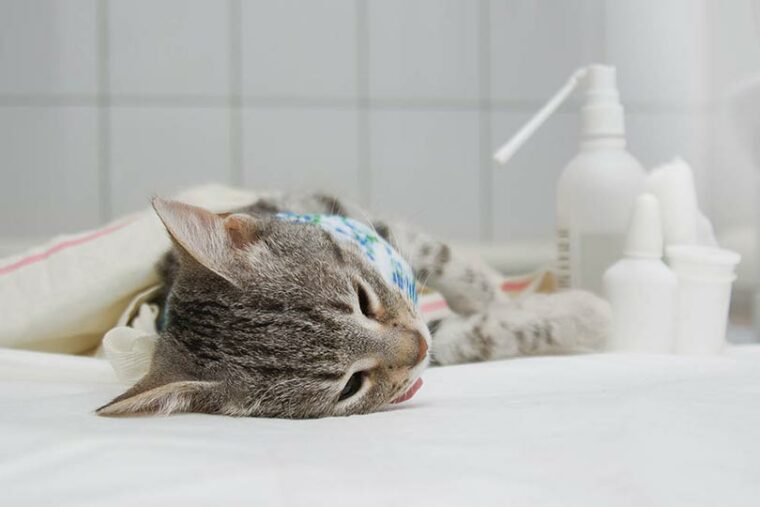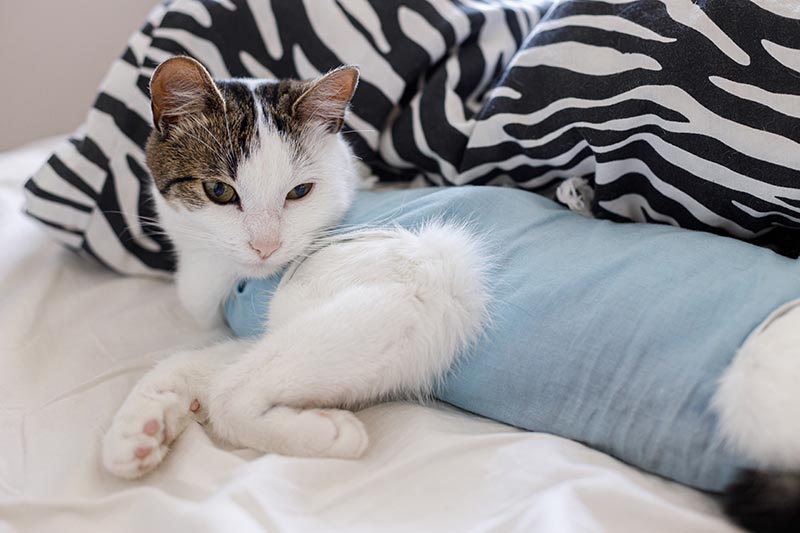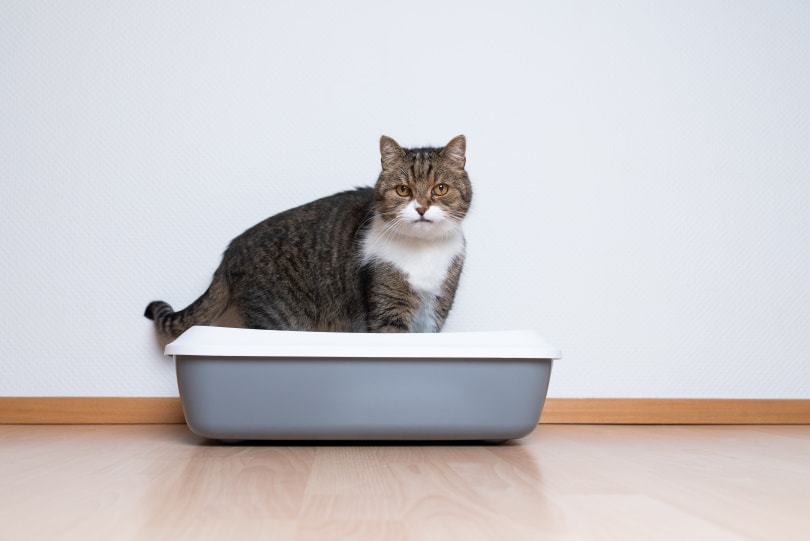
Being a responsible owner of a female cat often leads to having her spayed. This type of surgery is done daily by veterinarians around the world but can still be a scary thing for a loving pet owner to face. Like with any surgery, there are dangers involved, and time needed to recover afterward. Luckily for your cat, you can do a lot to make their recovery easier. We’ve provided a step-by-step guide for caring for your cat after she’s spayed to help you along the way. By following these tips, you can help ensure your cat recovers quickly.
Before Your Cat Comes Home
While your cat is having her surgery there are a few things you need to do before she comes home. Here’s a quick checklist so you can be ready.
How to Care for a Cat After Spaying
1. Prepare a Safe Recovery Area
When your cat comes home from being spayed she isn’t going to be her usual self for a while. Anesthesia may make your kitty nauseous, drowsy, and out of sorts. You may even find that she is a bit cranky and doesn’t want to be bothered. This is why a safe recovery area is so important. Providing your cat with an isolated area that allows you to keep an eye on her but also tucks her away from the activities of the house can help speed up recovery.

2. Provide Your Cat with a Comfortable Resting Area
If your cat doesn’t have her own bed, now would be a great time to get her one. After being spayed, your kitty needs a soft place to lay and relax. A comfy bed or her favorite blanket should work. You’ll also want to make sure you keep all her linens clean during recovery. You’ll also want to keep the bed on the ground so your kitty isn’t jumping to access it.
3. Keep the Lights Down Low
Anesthesia can cause cats to feel sensitive to light. During the first 24 to 48 hours, you should try to keep the lights in your cat’s recovery area dimmed. Also, you should avoid opening the window and trying to coax your cat into enjoying the sunlight. This could make your cat want to leap up onto the windowsill if the light isn’t bothering her.

4. Provide Your Cat with Fresh Food and Water
Your kitty may not have much of an appetite for 12 to 24 hours after surgery, mostly thanks to the anesthesia, but her appetite should return soon. Make sure she has access to food and water by placing them in her recovery area while she is recuperating. Once she is back on her feet, you can return to feeding her in the original area. If your kitty goes too long without eating, you should contact the veterinarian.
5. A Clean, Safe Litter Box
After being spayed, your cat should continue going to the litter box like normal. (If she doesn’t use the litter box within 24 hours after surgery, your cat needs to see the veterinarian immediately.) However, it’s best not to use regular cat litter due to the chance of infecting the incision. Instead, fill the litter box with shredded newspaper or other types of paper. Paper litter is also another option. While using this type of litter may require a bit more cleaning on your part, your kitty should be safe from unwanted infection.

6. Keep Your Kitty Inside
Even if your cat is used to going outside daily, it’s best to keep her indoors after being spayed. Not only could she do things she shouldn’t be doing and hurt herself, but there is also the potential of infection you must worry about.
7. Restrict Your Kitty’s Movement
You may miss playing with your cat after she has been spayed, but the more you can restrict her movements after surgery, the better she will be. Your kitty shouldn’t be playing, running, jumping, or doing too much so she can heal and avoid any damage to her incision. As we’ve already mentioned, this is why cat trees, toys, perches, and other items your cat enjoys playing on should be restricted following surgery.

8. Keep a Check on the Incision Area
You must check your cat’s incision area at least twice daily. If need be, take a picture of the incision with your phone for comparison. If you see any of the following, you should contact your veterinarian for assistance:
9. Use an E-Collar
Your cat will most likely try to lick at their incision site. This is quite common but not good. To keep this from happening, use an Elizabethan or e-collar, more commonly known as the “cone of shame”. These collars look like cones and go around your cat’s head to keep her from reaching the incision. If your cat shows little interest in licking the incision, you may not need one of these collars. It’s best to have one on hand though, just in case.

10. Manage Your Kitty’s Pain
Never provide your cat with human pain medication. After their surgery, the veterinarian will tell you exactly what you should give her, how much, and how often. Follow their instructions exactly. You don’t want your kitty in pain, but giving medications wrong can be devastating.
When to Contact the Veterinarian
In most cases, your cat will heal just fine on her own. However, there are instances when things don’t go as planned. Here are a few things you should keep an eye out for. If any of these issues arise, it’s time to contact your veterinarian for assistance.
Conclusion
As you can see, caring for a cat after being spayed takes a lot of dedication and love. While taking on this task may feel overwhelming, in most situations, things go just fine. If you follow this step-by-step guide you can easily care for your cat after her spay surgery and make sure she is back on all four feet in no time.
Featured Image Credit: Sannikova Maria, Shutterstock







